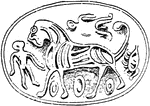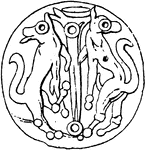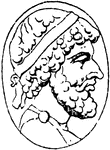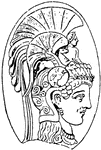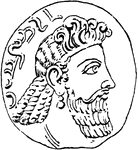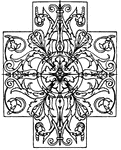Clipart tagged: ‘museum’

Alfred's Jewel
"An ornament of gold, apparently intended to hang round the neck, found in Athelney, and now in the…

Roman Base
This Roman base is a design found in the Capitalone museum of Rome, Italy. It is a design of leaves…

Chicago Art Institute
The Art Institute of Chicago is one of America's premier fine art museums. It was founded in 1879.

The Cromwell House at Stuntney
Stuntney is about a mile and a half outside the cathedral city of Ely. Oliver Cromwell lived here for…

Part of Shaft Foliated
The part of shaft foliated is a Roman state-candelabrum that is made out of marble. It is found at the…

Glyptothek at Munich
"In contrast to the Berlin school is that of Munich, which was founded by Gärtner. Its influence, which…

Gorkha Coin
"Gorkha deoasea coinage; rubbing from coin in British Museum." —The Encyclopedia Britannica, 1910
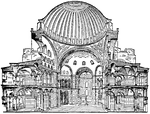
Hagia Sophia
Cross section of Hagia Sophia in Istanbul (historically Constantinople). The Greek name Hagia Sophia…

Dome System of Hagia Sophia
"Dome-System of the Church of Sta. Sophia at Constantinople. The Byzantine style of this first period…

Exterior of Hagia Sophia
"Exterior of the Church of Sta. Sophia at Constantinople. Although the impression conveyed by this church…
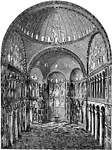
Interior of Hagia Sophia
"Interior of the Church of Sta. Sophia at Constantinople. Besides the Narthex, there was a second vestibule:…
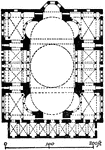
Plan of Hagia Sophia
Hagia Sophia is a former patriarchal basilica, later a mosque, now a museum in Istanbul, Turkey. Famous…

Section of Hagia Sophia
Hagia Sophia is a former patriarchal basilica, later a mosque, now a museum in Istanbul, Turkey. Famous…

Section of Hagia Sophia
"Section of the Church of Sta. Sophia at Constantinople. The Byzantine style of this first period reached…
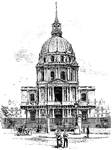
Church of the Hotel des Invalides
An illustration of the Church of the Hotel des Invalides located in the 7th arrondissement of Paris,…
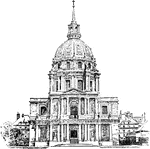
Hôtel des Invalides
A complex of buildings containing museums and monuments, all relating to the military history of France.…

Ivory Carving
"Leaf of a diptych, Roman, probably about 4th century, South Kensington Museum collection." —…

Egyptian statue
"Egyptian Statue in black basalt. Heroic size, in the British Museum." —D'Anvers, 1895

